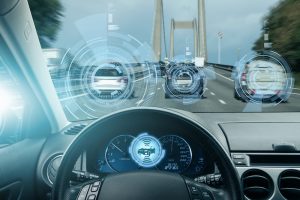The automotive industry has seen tremendous growth in recent years, with technological advancements playing a significant role in shaping its future. One area that has witnessed considerable development is driving monitoring, which involves the use of various sensors and cameras to monitor the driver’s behavior and the surrounding environment. In particular, vision technology and lenses are expected to play a crucial role in the future of driving monitoring, both inside and outside the vehicle. The integration of advanced vision lenses & technology in vehicles is expected to revolutionize the way we drive and ensure a safer journey for all road users.
Current State of Vision Technology and Lenses in Driving Monitoring
Vision technology has come a long way since its inception in the automotive industry. Today, cameras are an essential component of most driving monitoring systems, providing a 360-degree view around the vehicle.
The future of driving monitoring will see the introduction of advanced vision technology, including high-resolution cameras, 3D cameras, and infrared cameras. These cameras will provide higher accuracy, wider angles, and better performance in challenging lighting conditions. They will also feature advanced algorithms that can process vast amounts of data in real-time, enabling the system to detect and respond to various driving scenarios.
However, despite these advancements, existing vision technology and lenses face limitations. For instance, traditional cameras suffer from blind spots, which can hinder their ability to detect objects or events peripheral to the vehicle’s path. Moreover, image quality can be compromised by factors like low light conditions, glare, or adverse weather conditions. To overcome these constraints, researchers and manufacturers are exploring new developments in vision technology and lenses designed specifically for driving monitoring applications.
Upcoming Trends in Vision Technology and Lenses
Several innovations in vision technology and lenses are poised to revolutionize driving monitoring systems in the near future. Some of these developments include:
- Wide-Angle Lenses: Next-generation lenses will offer even wider fields of view than those currently available, allowing for better detection of potential hazards and improved situational awareness.
- High Dynamic Range (HDR) Imaging: HDR imaging capabilities will enhance picture quality by delivering a broader range of colors and contrast levels, resulting in more accurate object detection and classification.
- Night Vision Systems: Advanced night vision systems using thermal imaging or low-light sensors will enable drivers to see clearly in poorly lit environments, reducing the risk of accidents caused by reduced visibility.
- Stereo Vision: By employing two or more cameras, stereo vision technology can create 3D point clouds to accurately measure distances between objects, leading to more reliable obstacle detection and tracking.
- Artificial Intelligence (AI) Enhancement: AI algorithms will continue to improve, enhancing the accuracy of driver monitoring and enabling more personalized feedback and alerts based on individual driver behaviors.
- Edge Computing: Shifting computing processes from the cloud to edge devices will reduce latency and increase real-time processing capabilities, ensuring faster response times for critical driving situations.
- Multi-Modal Sensing: Combining data from multiple sensors, including cameras, radar, lidar, and ultrasonic sensors, will create comprehensive environmental models that enhance safety and reliability.
- Augmented Reality (AR) Displays: AR displays will project relevant information onto the windshield or side windows, keeping drivers informed without obstructing their view.
- Driver Monitoring with In-Cabin Sensors: In addition to exterior monitoring, next-generation driving monitoring systems will incorporate in-cabin sensors to track driver health and wellness, such as heart rate, body temperature, and blood oxygen levels. Cabin monitoring systems will utilize similar technology to observe driver behavior, monitor passenger activity, and detect any unusual occurrences inside the vehicle. Additionally, cabin monitoring systems can enhance safety belt usage. Cameras installed in the rear seats can monitor seatbelt compliance, ensuring passengers are buckled up properly. The system can then alert the driver if anyone in the vehicle is not wearing their seatbelt correctly.
- Integration with Autonomous Technologies: As autonomous driving technologies advance, driving monitoring systems will need to integrate seamlessly with these features, providing a smooth transition between human and computer control.
Impact of Vision Technology and Lenses on Road Safety
Overall, the impact of vision technology and lenses on road safety is substantial, offering numerous benefits that enhance driver awareness, reduce blind spots, lower accident rates, improve night vision, and support advanced driver assistance systems. As technology continues to evolve, we can expect even more innovative applications of vision technology and lenses to emerge, further improving road safety for everyone.